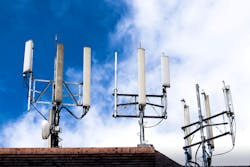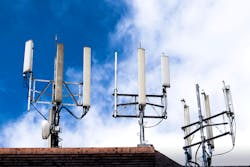Getting Started with Antenna Measurements
Antennas are oft-taken-for-granted components in wireless communications products. They may be as simple as microstrip patches or as elaborate as active arrays but, in all cases, they must be measured as part of the design process. Antenna measurements require a certain set of tools and even a particular test environment, often referred to as an antenna test range.
Those in need of antenna measurements can assemble a “do-it-yourself” antenna test system, have the test system designed by a test equipment manufacturer offering those services, or have the measurements performed by an outside consulting/contracting firm. Perhaps the most difficult path—albeit the one offering the most satisfaction— involves acquiring the necessary test gear and accessories to set up an in-house antenna test range.
There is a great deal of available literature on the topic of antenna test systems. Most application notes and white papers agree that any such system should be capable of measuring a set of fundamental antenna parameters that help define the performance of any antenna: radiation pattern, gain, efficiency, impedance/VSWR, bandwidth, and polarization.
Antenna measurements can take on many forms, including near-field and far-field measurements, and with a number of different analyzer types, including spectrum analyzers and vector network analyzers (VNAs). Some battery-powered portable antenna analyzers even include spectrum analysis capabilities for on-site antenna testing and spectrum monitoring. A basic test system requires at least a source antenna with a transmitter and the antenna under test with a receiver.
The main idea in testing is to use the source antenna and a transmitter with suitable bandwidth and polarization to illuminate the antenna under test with plane waves, which can then be measured by the receiver being fed by the antenna under test. One variation on this system involves a switchable reference antenna for feeding the test receiver with known performance characteristics. Another involves some kind of a positioning system to rotate the antenna under test relative to the source antenna, thus measuring the radiation pattern as a function of angle.
Some applications may require a transmitter with pulsed signal capabilities, such as military and commercial radar systems. Measurements at a single frequency are straightforward and relatively fast.
But for broadband measurements, which involve sweeping the transmitter across a wide frequency range with many measurement points, the measurement speeds of the transmitter and the receiver may be critical to performing broadband antenna measurements within any reasonable timeframe. In addition, the changing of frequencies during a sweep must be synchronized, involving a common frequency reference or time standard for the transmitter and receiver.
What makes antenna measurements different from, say, loss measurements on a passive RF/microwave component is the abundance of RF/microwave signals in the surrounding environment—i.e., from any number of nearby high-frequency signal sources within the frequency range of interest for the antenna measurements. Testing a miniature antenna for a smartphone, for example, involves all other cellular telephones within range of the receiver and its antenna under test.
For this reason, antenna measurements typically involve another component—a self-contained environment for the test equipment. This is usually an anechoic chamber, which itself must be characterized for the lowest possible levels of ambient RF/microwave radiation; by doing so, an antenna under test will only respond to the plane waves from the transmit antenna and not from additional signals from ambient signal sources.
Obviously, building an antenna test system is not a simple task. But for designers of high-performance antennas, it can be a gratifying experience. There is almost as much art as science involved in the design of an antenna test system and test environment. Future blogs will explore some of the requirements for the different instruments in such a system, shielding materials for the anechoic chamber, and even software for performing different antenna measurements.
About the Author
Jack Browne Blog
Jack Browne, Technical Contributor, has worked in technical publishing for over 30 years. He managed the content and production of three technical journals while at the American Institute of Physics, including Medical Physics and the Journal of Vacuum Science & Technology. He has been a Publisher and Editor for Penton Media, started the firm’s Wireless Symposium & Exhibition trade show in 1993, and currently serves as Technical Contributor for that company's Microwaves & RF magazine. Browne, who holds a BS in Mathematics from City College of New York and BA degrees in English and Philosophy from Fordham University, is a member of the IEEE.


